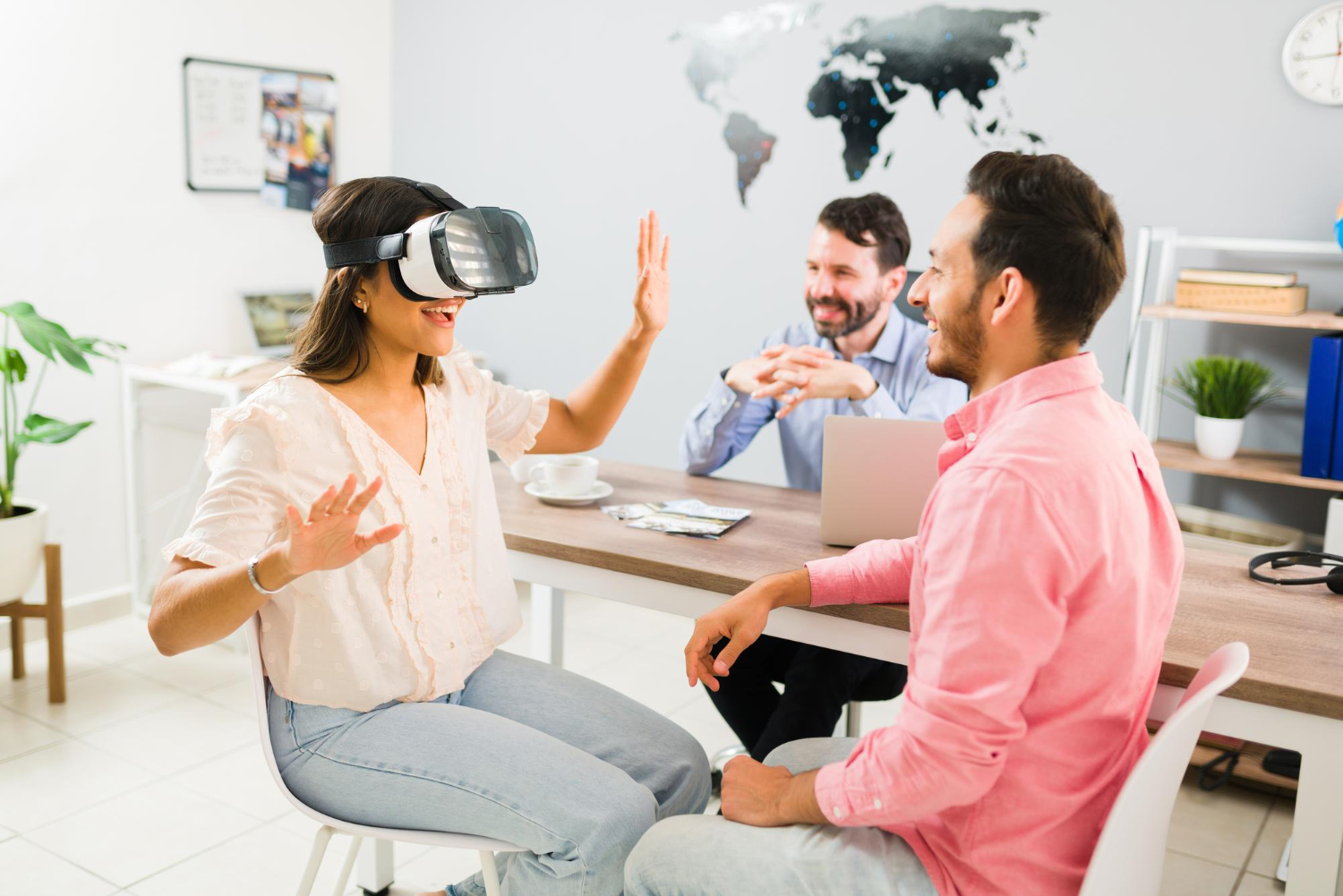The landscape of remote work and collaboration has undergone a massive shift after the inclusion of technological solutions in the management process. The primary reason for this technological integration is to address the challenges regarding the lack of physical presence and interactions.
AR and VR technology has provided a plethora of opportunities for organizations to bridge geographical gaps and encourage seamless collaboration among remote workers. From employee efficiency to inter-departmental interactions, a lot of processes could be streamlined with the incorporation of these technologies.
In this informational blog, we will discuss the impact of AR VR services on remote work and collaboration. Moreover, we will also talk about how these technologies can help enhance employee engagement within an organization.
The Role of AR and VR in Enhancing Remote Work and Collaboration
The demand for effective virtual solutions has significantly increased to facilitate remote work and collaboration. Consequently, businesses are adopting AR and VR services to craft highly immersive experiences that can be managed and transmitted across geographical boundaries.
Below are some of the prominent areas where AR and VR can prove to be beneficial in remote collaboration and communication.
Sharing Ideas and Feedback
One of the major challenges that companies face while working in a remote setting is collaborating for ideas and feedback sharing. For instance, getting feedback from the testing and QA teams for a newly launched product could be difficult if there are no physical interactions.
However, with an AR/VR application, designers and solutions architects can showcase a 3D model of their prototype through augmented reality. Besides, with VR solutions, spectators can even interact with the features and functionalities of the app, providing feedback in real time. This approach can boost the development process without compromising the ideation and testing part.
Training and Educating Employees
The next prominent benefit of integrating AR/VR solutions for your remote workforce is effective and efficient virtual training of your employees. With AR/VR models, the management team can simulate a virtual situation that an employee may encounter in reality. This can range anywhere from handling a client meeting to troubleshooting a consumer issue.
In fact, tasks like assembling and repairing can be provided to the development team that they need to complete using virtual reality. Apart from this, employees can also collaborate with instructors and peers via AR/VR apps to gain insights, feedback, and learning resources for skill enhancement.
Building Trust and Rapport
Another challenge that companies working in a remote environment often face is building trust and rapport among their employees. However, this could be resolved using AR/VR solutions by creating a social connection among them, enabling a real-like interaction in a virtual setting.
Furthermore, since your employees communicate virtually with each other, it’s easy to describe emotions and interests from the comfort of their homes. Companies can also organize virtual seminars, workshops, and team-building activities to nurture and promote a positive work culture.
Enhancing Team Meetings and Collaboration
When you are working on a project that requires interaction and collaboration from the entire team, it becomes imperative to have consistent communication and team meetings. For remote workers, teleconferencing and virtual meetings are the ideal options to ensure daily scrum calls.
In fact, 3D workspaces can be formed using AR/VR development services, which can easily compensate for in-person meetings. Additionally, one of the best parts of using AR VR services is that they ensure secure digital communication. Encrypted AR VR connections protect businesses against cyber threats, ensuring data shared within virtual meetings is safe.
Streamlining Workflows for Optimal Productivity
When it comes to increasing efficiency and productivity, the role of AR and VR solutions is significant. With immersive visualization, the leadership team can easily simplify complex tasks for the employees, enhancing their decision-making and problem-solving skills.
Moreover, virtual reality applications allow for convenient and real-time collaboration, streamlining workflows and improving team productivity.
Final Thoughts
It wouldn’t be wrong to say that streamlining team collaboration and communication becomes challenging in a remote environment. Indulging your employees in meaningful and valuable interactions using conventional methods is not easy at all.
However, despite these challenges, technologies like AR and VR can conveniently and seamlessly enhance workforce efficiency with improved team collaboration. Embracing these technologies will not only unlock new opportunities but also make the remote working experience immersive.


